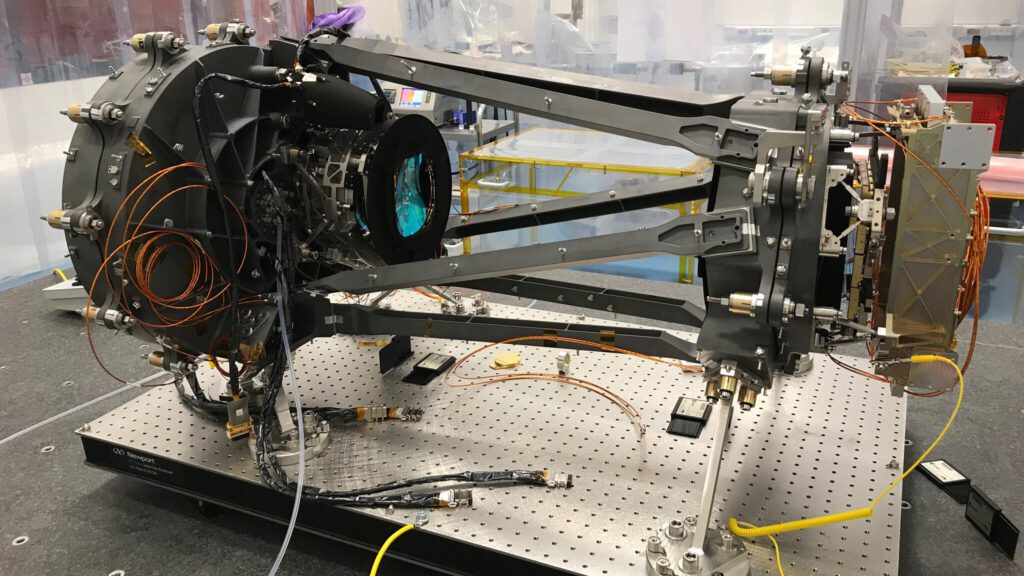The NISP Instrument
The Near Infrared Spectrometer and Photometer NISP observes two different types of data, as the name already implies. Using a single optical system, NISP covers the same field-of-view as VIS, the other instrument onboard Euclid, but in near-infrared (NIR) light between ~950 and 2020nm. NISP creates images with 16 Teledyne “H2RG” detectors, with each 2k by 2k pixels, or about 64 million pixels in total, with a sampling on the sky of 0.3 arcseconds per pixel, at a field of view of 0.57 square degrees for every exposure.
This is somewhat undersampling the diffraction-limited beam of light entering NISP, but the primary goal of NISP is not to create high-resolution images – that’s the purpose of VIS – but to gather spectral information. NISP’s two modes create on one side images through broad-band filters in the YE, JE, and HE band – the “photometric channel” – as an input into calculation of so-called “photometric redshifts”, hence rough distances, of more than a billion galaxies. The other, “spectroscopic channel” is creating NIR spectra with a spectral resolution of >400, which provide very precise distance measurement for a subset of ~50 million galaxies.
NISP receives light from a dichroic beamsplitter that reflects-off visible wavelength light into VIS. With four lenses of different materials the light is projected through optical elements in two wheels, a grism wheel – containing four different dispersing grisms -, and a filter wheel – with three passband filters and a closed position. Any of these 7 science elements or the closed position can be chosen to filter the light, that is then projected onto the detector array. The filters of 130mm diameter, are the largest NIR filters in an astronomical space mission so far.
For calibration of the sensitivity and linearity of each detector pixel an LED-based calibration lamp can shine light onto the detector array, at 5 choosable wavelengths.
NISP will operate its 565s spectroscopic observations in parallel to VIS, followed by 112s-long exposures in each of the YE, JE, and HE photometric bands. Standard wide-survey NISP images will be sensitive to ~24.3mag (AB) point sources at signal-to-noise of 5, and have a bright limit around 16.5mag.
NISP slitless spectroscopic observations will be able to detect Lyman-alpha emission lines across the Universe, out to redshifts of 1.9, when the Universe was only 3.5 billion years old. The power of this mode is the combination of good sensitivity to detect an emission line from even very compact distant galaxies and covering an area corresponding to almost 3x the area of the full moon on the sky in every observation.
In the Euclid Wide Survey, NISP will observe about 10 square degrees every day, covering every 5-6 days an area similar to what the Hubble Space Telescope has covered during its 30+ year lifetime in total.
NISP was designed and built by a consortium of European research institutions and labs as well as NASA-JPL in the USA under the lead of the Laboratoire d’Astrophysique de Marseille in France.
Updated 2023-06-01, KJ

